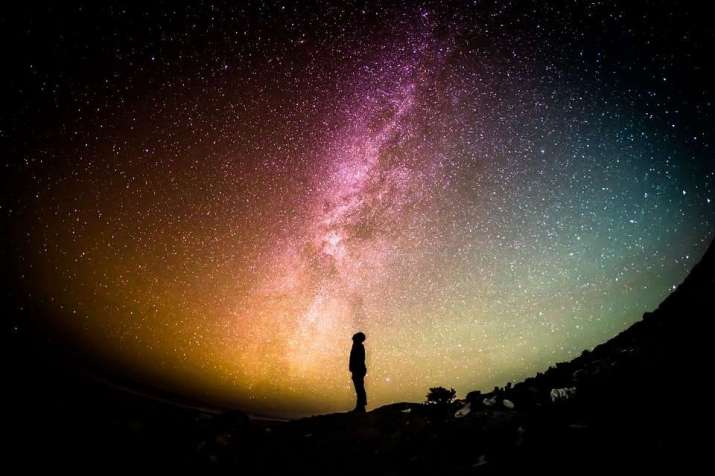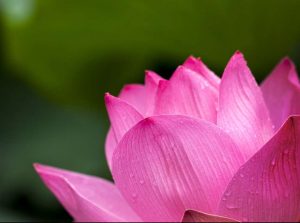
This month’s article is based on excerpts from a lecture on Buddhist cosmology that I gave at the Siam Society in Bangkok some 15 years ago, which, in turn, was based on a selection of quotes from the Pali Canon tied together by two distinguished editors of the Sri Lankan scholarsH. N. Jayatilleke and G. P. Malalasekera.*
The Buddha’s stated purpose was to talk only about suffering, the cause of suffering, and how we can become free from suffering by following the Noble Eightfold Path, but in the course of explaining the Dhamma, he incidentally mentioned enough about cosmology to allow us to piece together how he viewed humanity’s place in what he called “the thousandfold world system.”
Below, are some of these bits and pieces, paraphrased for the sake of ease, time, and space.
It is said that one can never hope to reach the outer limits of space, even if one were to move with the swiftness of an arrow in any direction and travel for a lifetime. There are uncountable numbers of worlds in the vastness of cosmic space. The thousandfold world-system extends as far as its suns and moons revolve, shedding their light in space. (A.IV.428)
The thousandfold world-system contains far suns, a thousand moons, thousands of earths thousands of heavenly worlds, and is said to be the thousandfold minor world-system. A thousand times such a thousandfold minor world-system is the twice-a-thousand middling world-system. A thousand times such a twice-a-thousand middling world-system is the twice-a-thousand major world-system. (A.I.227.228; IV.59 60)
Such systems are never stable or permanent; they are always in the process of evolving (saívaþþamána) or of dissolving (vivaþþamána). Such processes take vast periods of time measured in aeons called kappa (S.II.181) until eventually cosmic catastrophes bring them to an end. (A.IV.100-3)
In the thousandfold world-system, time is not measured everywhere in the same way. For example, 50 Earth years are equivalent to one day and night on one of the heavenly worlds, while on yet another, a day and night are equivalent to 1,600 Earth years. (A.IV.429)
Human worlds stand midway in the hierarchy of worlds, and being in these human worlds involves a mixture of the pleasant and the unpleasant, the good and the evil, with the pleasant and good traits being intensified within the higher worlds and the unpleasant and evil traits being intensified within the lower worlds. If we contemplate the vastness of cosmic space and the seemingly endless number of worlds of which the human worlds form only a very small part, human problems will appear in a different light and seem trifling indeed.
One is reminded of a comparison the Buddha made when chiding a section of his monks who felt superior to the rest because they had more fame and more gain. The Buddha likened them to worms, born in dung, bred in dung, and living on dung, but feeling superior to other worms who were not so privileged.
Humility is one of the lessons we ought to learn when we view the cosmic perspective of humanity crawling over the surface of the Earth, trying to eke out a living. Compared with the joys of the heavenly worlds, even kingship on Earth seems to be a beggarly existence. (A.IV.254) The lifespan of mortal humans in comparison with cosmic time is insignificantly small and can be compared in duration to a line drawn upon the Earth. (A.IV.138)
Although human life appears to be insignificant from a cosmic standpoint, within the Buddhist texts it is thought to be of great worth because humans have the capacity within them to gain the highest knowledge, the capacity for attaining such eminent moral distinction that this would qualify them as worthy of being the ruler of a world system.
In the course of a human samsaric evolution, it is said that he has been born as different animals many hundreds of times, (S.II.188) and it is, indeed, rare for a being to be reborn into human existence for birth as a human being is actually a rare event (dullabham manussattam). For this reason, it is the duty of every human being to make the most of such an acquired, precious human life.
Humans have the instructions and the equipment to become capable of discovering even the deepest truths about the cosmos, and it was as a mortal human being that the Buddha realized this full potentiality. The difference being that the Buddha was not only the best among contemporary humans but also the highest among all sentient beings. The intellectual, moral, and spiritual heights that humans may realize are so great that those Noble Ones who have reached such heights are as different from ordinary humans as ordinary humans are from animals.
Such Noble Ones should not be be said to have been been especially favored by divine intervention, coming from above. They have attained these heights based solely on their own energy, effort, and merit, cultivating their minds, working within, developing their Buddha-nature, ever striving throughout a long series of rebirths. It should also be stressed that what a Buddha is capable of achieving is considered a potentiality possible for all human beings.
For this reason, no one has the right to despise any fellow creature because we are all subject to the same laws of existence. Ultimately, we all have the same Buddha-nature and the same potentiality, even though we may be at varying stages of growth and development, and our growth rates may differ during different phase or stages. (A.II.38.4)
* The mid-20th century produced two great Sri Lankan scholars and gentlemen whose contributions to Buddhist studies made an indelible impact on the Western Theravada community. They were H. N. Jayatilleke, professor of philosophy at the University of Ceylon, and G. P. Malalasekera, dean of the Faculty of Oriental Studies and professor of Pali and Buddhist civilization at the University of Ceylon. In their monumental work, Buddhism and the Race Question, UNESCO, 1958, they argue that the Hindu caste system does not fit at all into the framework of Buddhist cosmology, which would be a good subject of yet another essay).
References
Jayatilleke, K.N. and G. P. Malalasekera. 1958. Buddhism and the Race Question. Paris: The United Nations Educational, Scientific and Cultural Organization. https://unesdoc.unesco.org/ark:/48223/pf0000064300














